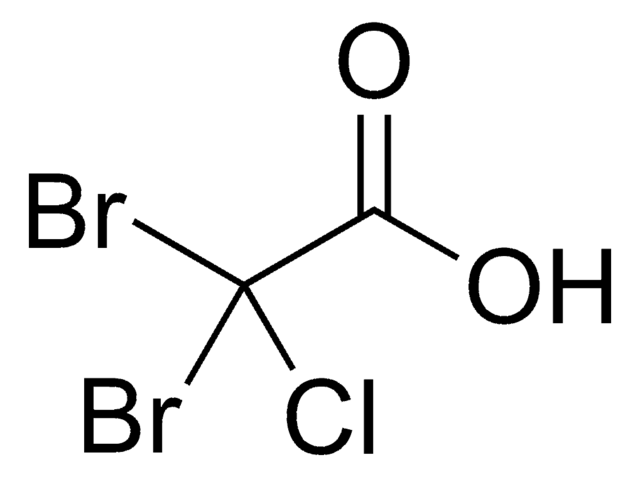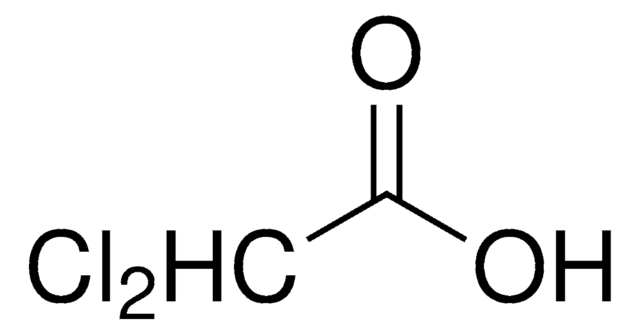Kluczowe dokumenty
442499
Bromodichloroacetic acid
analytical standard
Synonim(y):
Bromdichloroacetic acid
About This Item
Polecane produkty
klasa czystości
analytical standard
Certyfikat analizy
current certificate can be downloaded
opakowanie
ampule of 100 mg
metody
HPLC: suitable
gas chromatography (GC): suitable
mp
69-72 °C (lit.)
Zastosowanie
environmental
Format
neat
temp. przechowywania
2-30°C
ciąg SMILES
OC(=O)C(Cl)(Cl)Br
InChI
1S/C2HBrCl2O2/c3-2(4,5)1(6)7/h(H,6,7)
Klucz InChI
XSWVFEQKZFUULO-UHFFFAOYSA-N
Szukasz podobnych produktów? Odwiedź Przewodnik dotyczący porównywania produktów
Powiązane kategorie
Opis ogólny
Sigma-Aldrich offers bromodichloroacetic acid for a variety of applications that include, but are not limited to, environmental, food and beverage, forensics, petrochemical and pharmaceutical analysis.
Zastosowanie
Hasło ostrzegawcze
Danger
Zwroty wskazujące rodzaj zagrożenia
Zwroty wskazujące środki ostrożności
Klasyfikacja zagrożeń
Acute Tox. 4 Dermal - Acute Tox. 4 Inhalation - Acute Tox. 4 Oral - Eye Dam. 1 - Skin Corr. 1B
Kod klasy składowania
8A - Combustible corrosive hazardous materials
Klasa zagrożenia wodnego (WGK)
WGK 3
Temperatura zapłonu (°F)
Not applicable
Temperatura zapłonu (°C)
Not applicable
Środki ochrony indywidualnej
Eyeshields, Faceshields, Gloves, type P3 (EN 143) respirator cartridges
Wybierz jedną z najnowszych wersji:
Masz już ten produkt?
Dokumenty związane z niedawno zakupionymi produktami zostały zamieszczone w Bibliotece dokumentów.
Klienci oglądali również te produkty
Nasz zespół naukowców ma doświadczenie we wszystkich obszarach badań, w tym w naukach przyrodniczych, materiałoznawstwie, syntezie chemicznej, chromatografii, analityce i wielu innych dziedzinach.
Skontaktuj się z zespołem ds. pomocy technicznej











